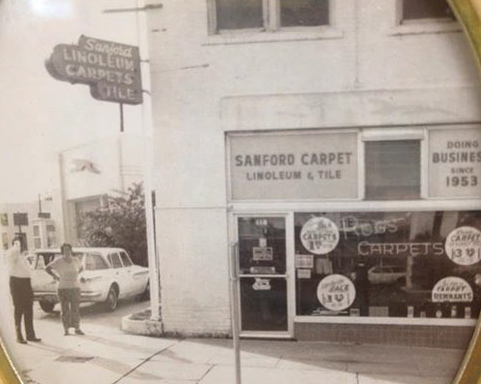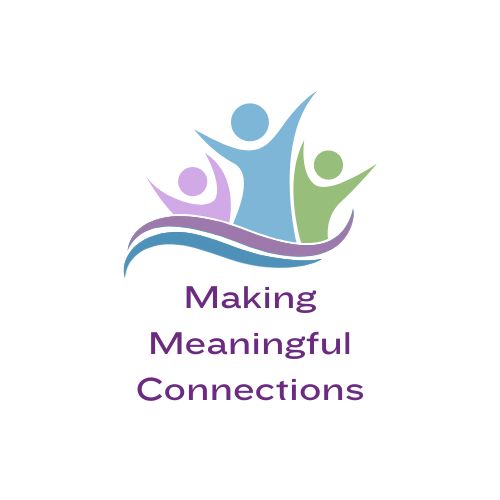
by Barb Abramson | Nov 20, 2014
I used to work for a media company that was divided into several autonomous departments, each overseen by a mid-level manager who reported to the division manager. We operated pretty independently of each other and were in essence, our own little company. It was sort of like being in a franchise, except my group handled products, another group finance, a third group shipping.
That conglomerate was sold and our division formed its own company and we were a compact small business under one boss who oversaw all the worker bees who handled products, finance and shipping.
In both cases, our employee workday looked something like this:
Clock In – Work –Work -Break -Work –Lunch
Work – Work – Break – Work –Clock Out
Next day, Wash, Rinse, Repeat
The daily grind for us was just a means to an end. It was a job
Sound familiar?
The Boring Routine
Week in and week out employees trudge to their cubicles, sit at their desks and accomplish tasks assigned to them. Using the same scenario but a different job, employees will also show up at their retail shop, or the service-oriented installation company or business office for their filing clerk duties. You get the picture.
While the job title may change, what all these employees have in common is they are unmotivated. The relationship with their co-workers resembles surface camaraderie. However, they all share the same trait – they watch the clock on its slow journey to the end of the workday and their release from job hell.
For managers and other corporate higher-up-the chain bosses, who view their workforce as unengaged -“doing just what it takes to get by employees” – you are getting back what you are fostering in your staff –- the bare minimum.
We talk about teamwork, but do we really have a team?
What is a Team?
A team is a group of people that come together to achieve a common goal.
When you look out at your pool of employees, do you see a team? A group of people by definition is not a team. There must be a purpose – a reason for them to come together and it is more than just working in the same building.
A team is created. A team is inspired. A team is invested in. A team is led.
As a leader, understanding who is on your team is essential to its success. What are the strengths and weaknesses of each team member? Delegating tasks based on those skills creates an environment of interaction and flow.
Investing in your team on a more personal level also strengthens the team. This doesn’t mean you have to become best friends with your staff. But showing that you care about who they are as much as what they do for you creates a relationship that fosters trust.
People need to feel connected to other people at work, including both coworkers and their boss. Not feeling connected is actually a prime reason for job dissatisfaction.
Team members who can relate to each other on a variety of levels enjoy interacting and working together to solve problems and create opportunities.
Engaging a Team
How do you foster a team environment in the workplace, especially if there has not been one in place before?
Create a roundtable environment and ask your team to share what matters to them in the workplace and outside of work as well. But don’t just play observer. Join in with your visions as well. Engaging and interacting with each other can foster a creative process for business development and problem solving. You many want to have session like this on a routine basis to further the inter-workings of the team. If someone new joins the team, be sure to give him or her the opportunity to get up to speed and acclimated into what is already comfortable for everyone else.
Just like a woven fabric is stronger than individual threads, a well-designed team becomes a support system for the company and each other.
Originally appeared on blog.manifast.com
Flickr Photo Credit:
Sean MacEntee

by Barb Abramson | Nov 16, 2014
I majored in communications in college and worked for 12 years in the media industry until my job was relocated to a different state. And while I was offered the opportunity to move across the country, several factors held me back and they all had to do with family.
My parents and my husband’s parents both lived within 15 minutes of us. Our son had the benefit of growing up with both sets of grandparents nearby. My husband and I had very special relationships with our own grandparents and wanted that for our son. Family closeness both in relationship and proximity was important to us.
Then there was the family business. My husband ‘s parents opened a flooring company in 1953. His father was one of five children who all had at one time, a flooring business. I think it was in their blood. My husband helped his dad during the summers while he was in high school and eventually worked there full time. He had gone to college to be a P.E. teacher, but when his father fell ill, he put his family first.
When we were engaged, his dad sat me down to ask me what my intentions were for the business. After all he stressed, all the spouses of his siblings worked in their stores. “Oh no!” I countered. “I have my own job, my own career.” Not for me. Besides I didn’t know anything about running a business. And I happily went about my career.
When my company relocated, I toyed with consulting for a couple of years. At the same time, my husband wanted to retire his parents and asked for my help. I had showed up at the store now and then over the years and knew a little about flooring. I couldn’t help it. My husband lived and breathed it and he and his parents talked about every job, every day. He would spend the day with them, come home and they would talk on the phone about the next jobs on the schedule.
So when he asked me to help him, I first refused. Then I relented and agreed to one year, which turned into two and then five and suddenly it was nearly 20. I have to admit, I am proud of what I have accomplished with our business as I learned to be an entrepreneur and run a successful “Mom & Pop” shop.
Working with your family can be extremely rewarding. There is a deep sense of accomplishment that you can share with the ones you love. They get you. You get them. There will never be a lack of conversation at the dinner table. You are part of a legacy and never have to worry about the nepotism rule. In fact, you can groom you children right into the family business.
On the flip side, working with your family can be extremely stressful. It can be so much a part of your life that relationships between parents, spouses, children and siblings can suffer. There are days I want to run from the room screaming!
It is really important to find a balance so that the business and the family both win.
Here are the 5 Ways Not To Lose Your Family to the Family Business
Leave It At The Office
Employees are often told to leave their personal lives at home. Family-run business owners should leave their business life at the office. Your friends and other family members who don’t work there may not want to hear “shop talk” every time they are around you. You may also be more obsessed than other family members. Waking up and discussing business first thing can be a turnoff!
Defined Roles At The Office May Not Apply At Home
Are you the President, CEO, Chairman of the Board, Big Dog on Campus? You may be at the top of the food chain at the office, but that doesn’t mean you rule the roost everywhere else. Work and home are both communities that require cooperation and team thinking.
Don’t Pressure The Kids To Go Into The Family Business
Working with family may be your dream, but it may not be your kid’s. They have their own dreams and aspirations and they may not be the same as yours. Understand that the next generation may not be carrying on your legacy.
Have Outside Interests Outside Of Each Other
Can’t get enough of your family and/or spouse/partner. You should. Get involved in events and activities that DON’T include each other. Discover other people and experiences. It will give you more to talk about with each other too!
Don’t Forget To Have A Life
All work and no play is never healthy for anyone. No one will care about your business like you or your family does, but if you don’t have a healthy balance, you will miss out on the great things going on in the world around you.
Originally appeared on GoodMenProject.com

by Barb Abramson | Nov 9, 2014
When someone dies unexpectedly and they are suddenly ripped from your life, the pain is excruciatingly deep and the grieving, unbearable.
When someone dies that has had severe dementia or Alzheimer’s, the pain is still there, but the family members and loved ones have been grieving often for years as they watch the person they once knew fade away before their eyes.
As I watched my dad disappear from his own mind and his world (our world) I struggled for ways to reach him, to connect to the man I shared so many memories with.
I knew that as people age, their short-term memory weakens and the synapses in their brain don’t fire correctly. But while recent thoughts and memories are not within reach, the memories of long ago are, and thankfully, I found ways to pull Dad back – at least for a while.
It started with music. Singing the tunes I grew up with. Funny diddies, some of them written by my grandmother (his mother) that became family reunion requirements. Grandma at the piano, the rest of us linking arms and voices and laughter.
My parents had a favorite song – The Nearness of You. When I was growing up and my parents would fight, I would find the album with that song on it and put it on the record player so they would hear it and stop fighting. It always worked. They would reach for each other’s hand and I was happy.
My mom died three months before my dad, partly I believe from a broken heart watching the man she adored all her married life leave her mentally a little every day. The day before she left us, I took her to visit him in the Alzheimer’s section of their Assisted Living Facility. Their song, ironically was playing on the radio,
“Dad, it’s your song! Dad, your bride is here! Dad! Dad”! I kept imploring, trying to reach down and pull him back. I started singing along, close to his ear so I knew he would hear me. He did! He started nodding and mouthing the words as best he could and reached for Mom’s hand. He connected to a memory. To the sound of a memory.
I had a similar experience a couple years earlier with my Uncle, who also had Alzheimer’s. I was visiting him with my cousin at his Assisted Living Facility. I brought pictures of my mom, (his little sister) with me. He narrowed his eyes as if trying to figure out whom the picture was of, but didn’t know.
I had my phone with me and dialed my mom who was waiting for the call. I held the phone to his ear and mom started talking. His eyes widened and his mouth opened and a muffled sound came out then he pointed at the picture. He heard her voice and connected to a memory – to a voice – to family.
These experiences with my own family are what prompted me to want to help seniors and their families connect to their memories and to each other.
I wanted to find out if all the senses, not just hearing could stimulate memories and I chose to focus with seniors before they reached a stage where it was so tough and emotional for everyone involved. My program included active seniors, as well as some with early Alzheimer’s and dementia.
Most seniors as they age experience some short-term memory loss, but their longer-term memories are more intact. I believed that using the sensory response to a long-ago memory would create an “anchor” to remembered happiness, improving the quality of life experience in the present time.
My goal was to use the five senses in a workshop format to stimulate their memories and help them to connect to their families and to each other by discovering similar memories that they have in common.
What has happened each time I facilitate this program has give me as much joy as the seniors and their families experienced. I heard some of the most touching stories including one from a woman in her 80’s who recounted her favorite memory of touch — “the first time my husband’s lips pressed against mine” — and the smiles went around the room, followed by stories of hand-holding and hugs and snuggling in bed. Or the elderly man in a wheelchair, hunched over, his voice shaking sharing his favorite sight was of the beach because it was where he dropped to one knee and proposed to his gal. His wife has since passed, but his son sitting next to him was deeply moved.
Aging isn’t always graceful and for some it brings fear. But sharing happy memories with others and making meaningful connections in the process can bring joy and happiness to a family struggling with the disease. For seniors no longer living in their own homes, discovering common experiences can make connecting with other seniors easier and can help create new friendships.
The Nearness of You was written by Ned Jones and Hoagy Carmichael for the movie Romance in the Dark and was first performed by Hoagy Carmichael in 1937. Some may be familiar with the Norah Jones version.
It’s not the pale moon that excites me
That thrills and delights me, oh no
It’s just the nearness of you
It isn’t your sweet conversation
That brings this sensation, oh no
It’s just the nearness of you
When you’re in my arms and I feel you so close to me
All my wildest dreams come true
I need no soft lights to enchant me
If you’ll only grant me the right
To hold you ever so tight
And to feel in the night the nearness of you
You can watch Norah perform it here.
Originally appeared on GoodMenProject.com
Flickr: jbstafford



